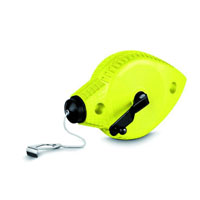 In our new article, we want to talk about such a fairly simple, but very useful tool as a marking cord. It will help you a lot when you need to mark even straight lines on a flat surface, for example, cutting lines for sheet materials or levels for the future location of the partition. To do this with a marking cord is much faster than, for example, using an ordinary pencil and a metal meter for this, especially if the distance is more than 2 - 3 meters.
In our new article, we want to talk about such a fairly simple, but very useful tool as a marking cord. It will help you a lot when you need to mark even straight lines on a flat surface, for example, cutting lines for sheet materials or levels for the future location of the partition. To do this with a marking cord is much faster than, for example, using an ordinary pencil and a metal meter for this, especially if the distance is more than 2 - 3 meters.
Marking cord design
By its design, the marking cord is quite simple. This is usually a cotton thread of several fibers 0.5 mm thick, which is wound on a special drum inside a plastic box. The thread comes out through the hole. Together with the thread, a special colored chalk powder is poured into the box,
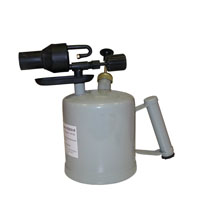 In villages and villages a couple of decades ago, almost any owner of a private house in a garage or barn had such an interesting and wonderful tool as a blowtorch. In terms of its usefulness, this tool was perhaps not inferior to such more popular tools as an ax or pliers.
In villages and villages a couple of decades ago, almost any owner of a private house in a garage or barn had such an interesting and wonderful tool as a blowtorch. In terms of its usefulness, this tool was perhaps not inferior to such more popular tools as an ax or pliers.
This was due to the fact that a lot of problems could be solved only with its help. They used a blowtorch to heat locks on doors, frozen pipes, dry surfaces made of non-combustible materials, but most importantly, they burned piglets - then they were in almost every yard. Now, of course, there is not so much work for this lamp, but still it is a fairly useful tool in the household. And now in more detail about its design, features and purpose.
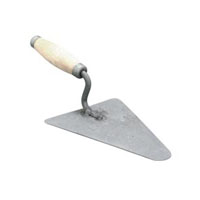 In this article we want to talk about such a construction tool as a trowel. For most people, this tool is better known as a construction trowel or just a trowel. That's what most builders call it.
In this article we want to talk about such a construction tool as a trowel. For most people, this tool is better known as a construction trowel or just a trowel. That's what most builders call it.
It is impossible to say exactly why this name appeared, but most likely due to the fact that this is the main tool of a bricklayer, which, in order for the masonry to turn out beautiful, must have a significant level of skill, hence the name.
In the general concept, a trowel is a piece of sheet metal mounted on a wooden or plastic handle. At the same time, the plane of the metal does not coincide with the plane of the handle, which makes it possible to both conveniently hook the finishing material and apply it to the desired surface. The distance between the planes of the metal part and the handle is usually from 3 cm to 5 cm.
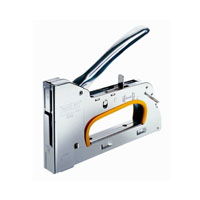 In the process of construction or repair, it is very often necessary to attach various flat or rolled facing materials to the main building structures or surfaces. Previously, this was done with a conventional hammer and small upholstery studs. Such work is characterized by a rather large volume, as well as labor intensity.
In the process of construction or repair, it is very often necessary to attach various flat or rolled facing materials to the main building structures or surfaces. Previously, this was done with a conventional hammer and small upholstery studs. Such work is characterized by a rather large volume, as well as labor intensity.
Imagine how long it takes to nail a material such as fiberboard to a wood floor. These are thousands of carnations, for which it will be necessary to spend a lot of time. But gradually the development of the construction industry in the field of the emergence of new tools came to this area. For builders, they invented a special tool that speeds up the described work - a construction stapler. This tool allows you to partially mechanize upholstery work.
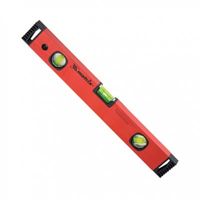 In the construction process, a very important role is played by strict adherence to the correct location of building structures or planes of finishing surfaces. If we take an aesthetic role, then a curved wall looks much worse than a flat one. It is more difficult to finish the surface with a material, for example, by wallpapering a curved surface than a flat one.
In the construction process, a very important role is played by strict adherence to the correct location of building structures or planes of finishing surfaces. If we take an aesthetic role, then a curved wall looks much worse than a flat one. It is more difficult to finish the surface with a material, for example, by wallpapering a curved surface than a flat one.
But most importantly, non-observance of the geometry of the building structure significantly reduces its strength, or even makes it non-functional. Thus, it is very important for the builder that the orientation of the building elements is strictly verified. For these purposes, there are a large number of types of such a construction tool as a building level.